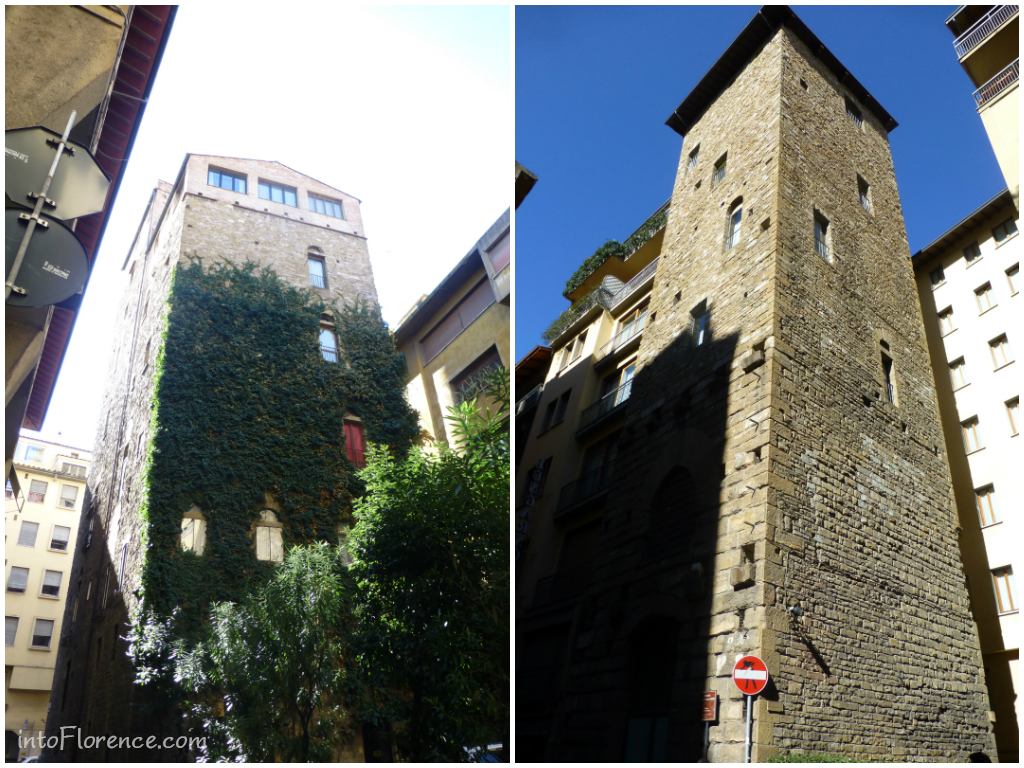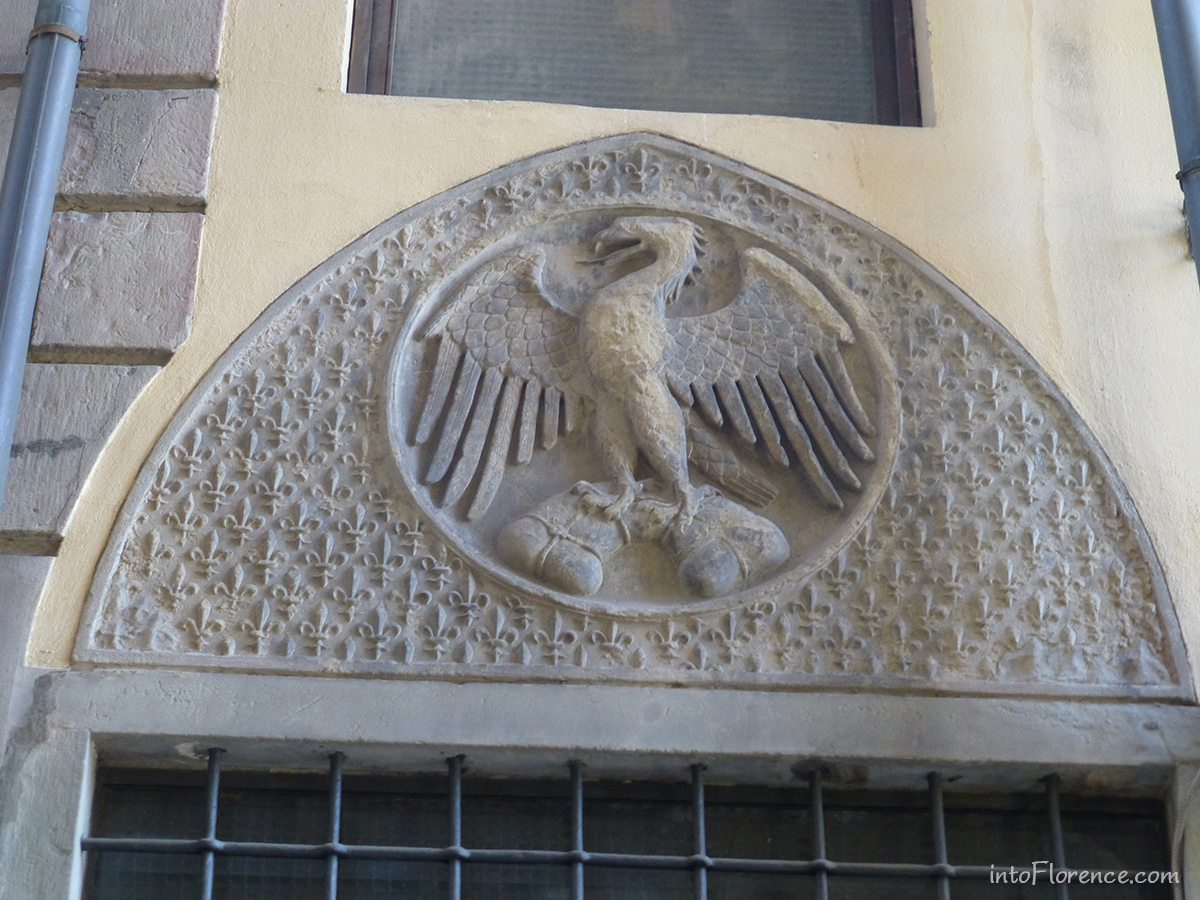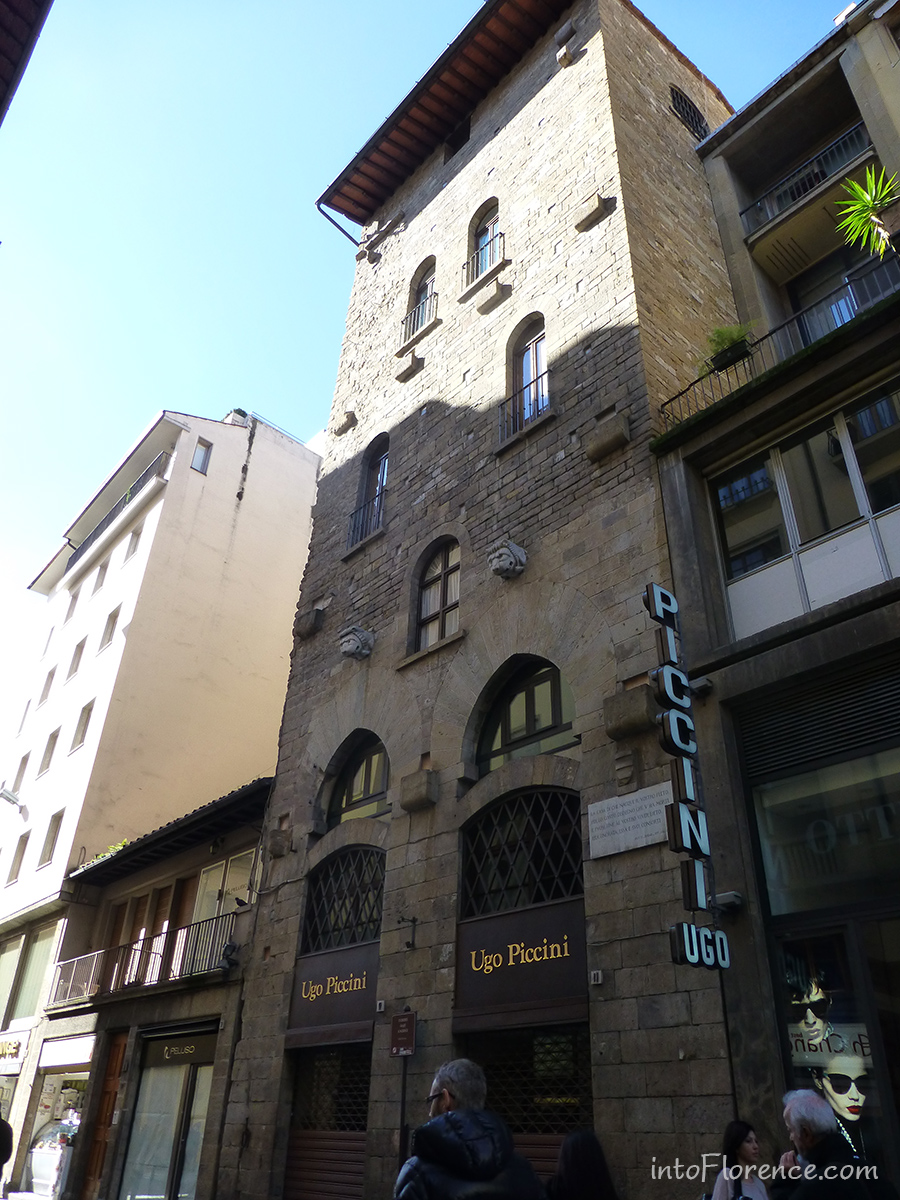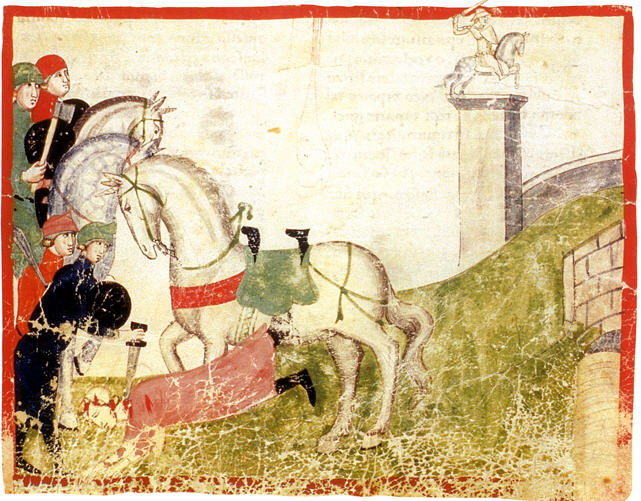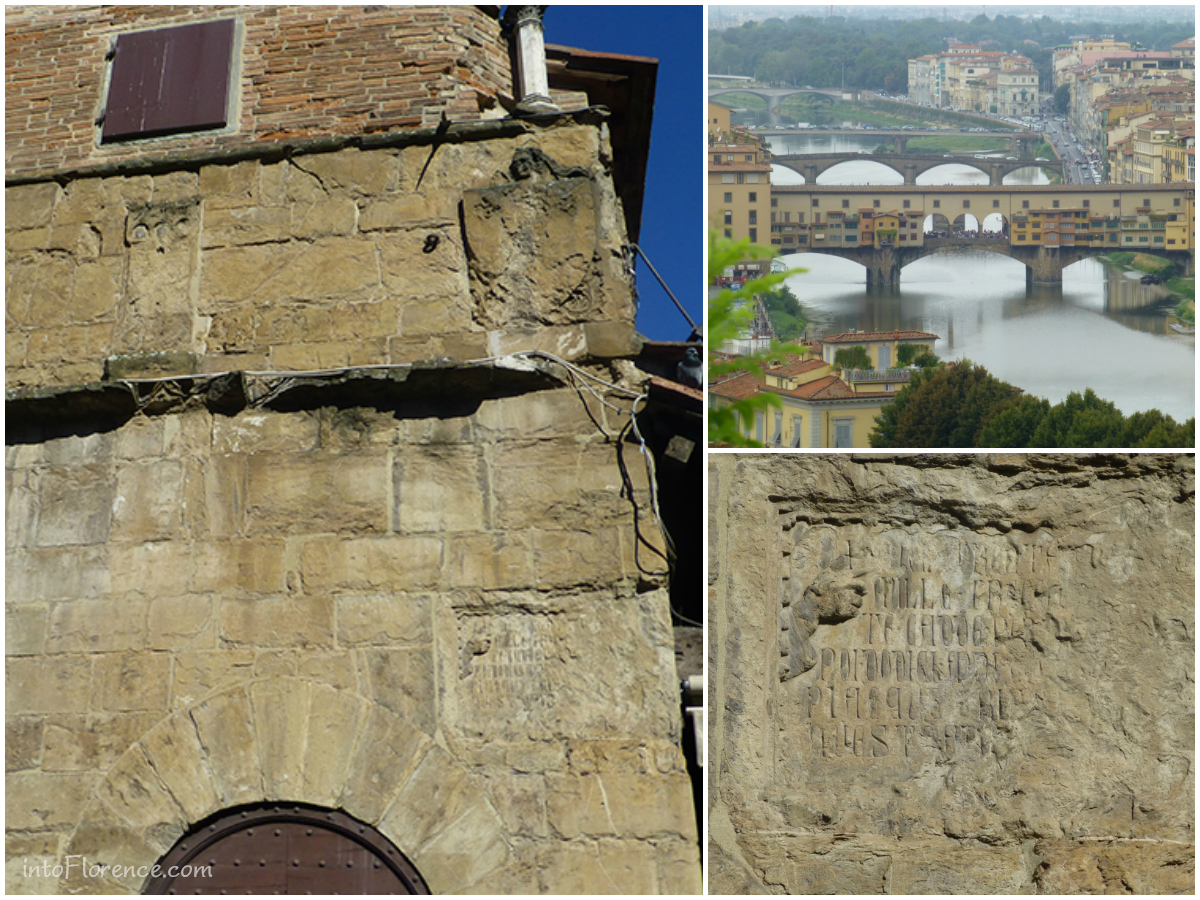
Florence is known as the cradle of the Renaissance, but it was the wealth amassed in the Middle Ages that made this golden period possible.
More than 800 years have passed since the Middle Ages, and not much is left in the city from that period. Many buildings were demolished, especially in the second half of the 19th century when Florence became the capital of Italy and a major redevelopment of the city was carried out.
I went looking for traces of Medieval Florence with a tour organized by Artemide, a collective of five young city guides.
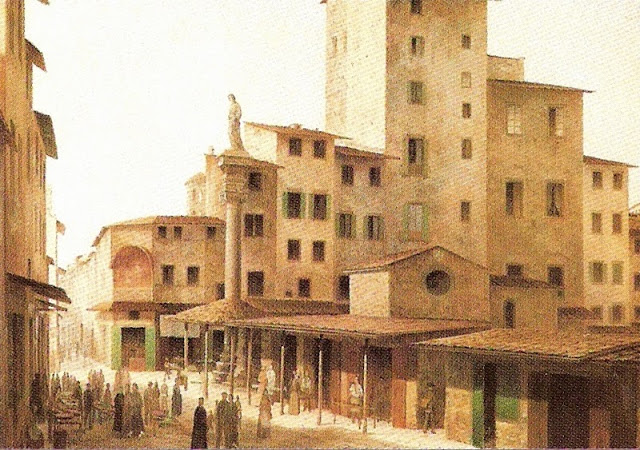
Wealth through trade
The tour started on Piazza della Repubblica, the ancient heart of the city where in Roman times the forum was located. In the Middle Ages, it was the location of the main market square. Our guide Dasha led us through streets and over squares that are closely connected to the medieval history of Florence. She vividly told about life in the narrow streets of the medieval town where the houses were built so close together that sunlight could not even penetrate. Due to the lack of hygiene and the absence of any form of sanitation, the people suffered from all kinds of diseases and epidemics, and the stench must have been unbearable.
In addition to the existing social classes of the clergy, military and civilians in the Middle Ages, a new class of merchants arose that brought great wealth. This new bourgeoisie lived on their own squares and to protect themselves against attacks by feuding families, they built towers in which they could retreat.
In the Middle Ages about 150 tower houses rose in Florence, now there are 50 left, some still stand on their own, but most have been absorbed by other buildings. The towers could reach up to 70 meters in height, but in later centuries, all towers were shortened to a maximum height of 30 meters. The entrance was via a staircase on the first floor. In case of emergency, the stairs could be taken down fast, leaving the family safe in its tower during an attack. Wooden bridges connected the towers making it possible to move between buildings. Most families had multiple towers in their possession.
Important families in the 13th century were the Donati, Cerchi, Macci, Adimari, Amidei and Ricci.
Piazza dei Tre Re and Vicolo dell’Onestà
The first square that we visited on our quest for the Middle Ages was Piazza dei Tre Re, the Square of the Three Kings, named after the tavern that was once located there and that was known for its deep-frying. In Florence many streets and squares got new names over the years, but under the new name you can often find a sign with the old name. This square was once called the Corte De ‘Macci, the domain of Macci family. The only thing that reminds of their power and wealth is the Torre de’ Macci.
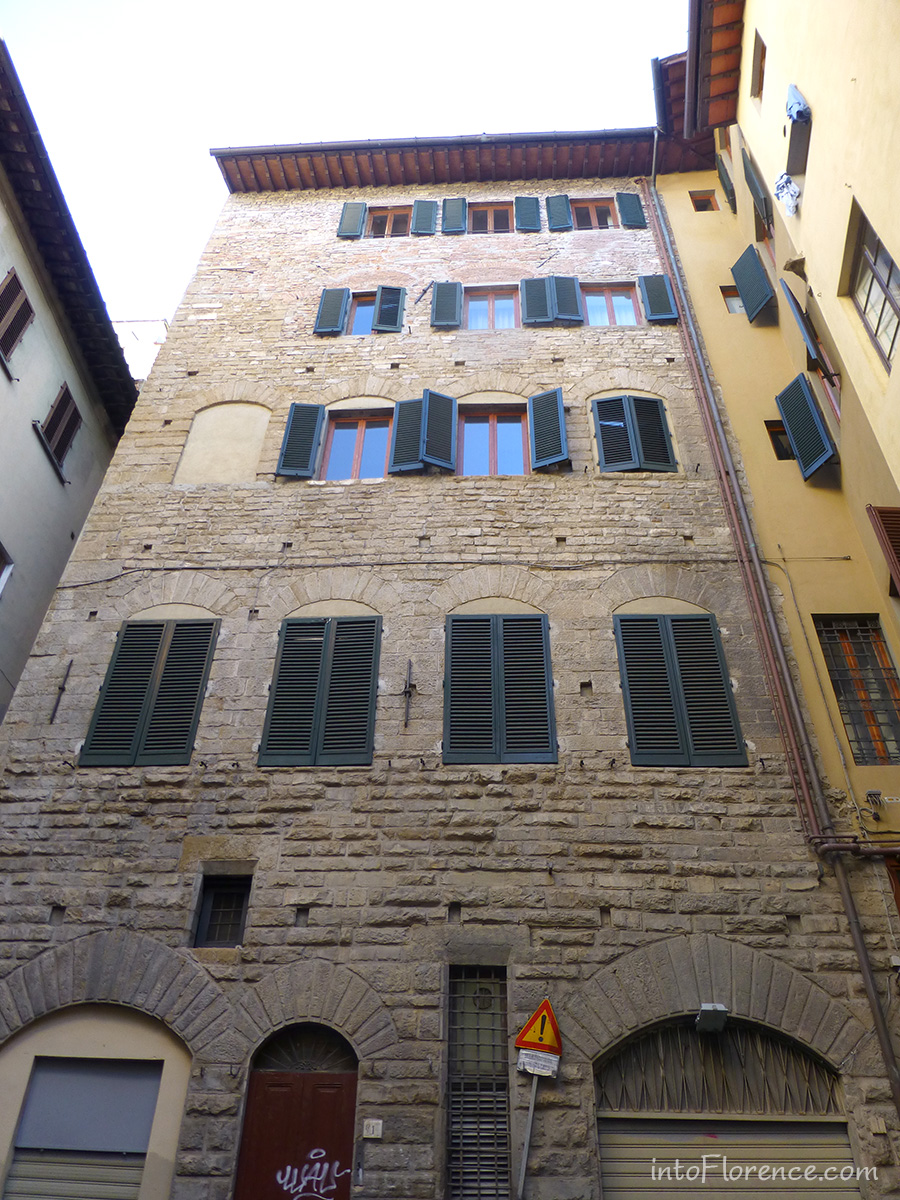
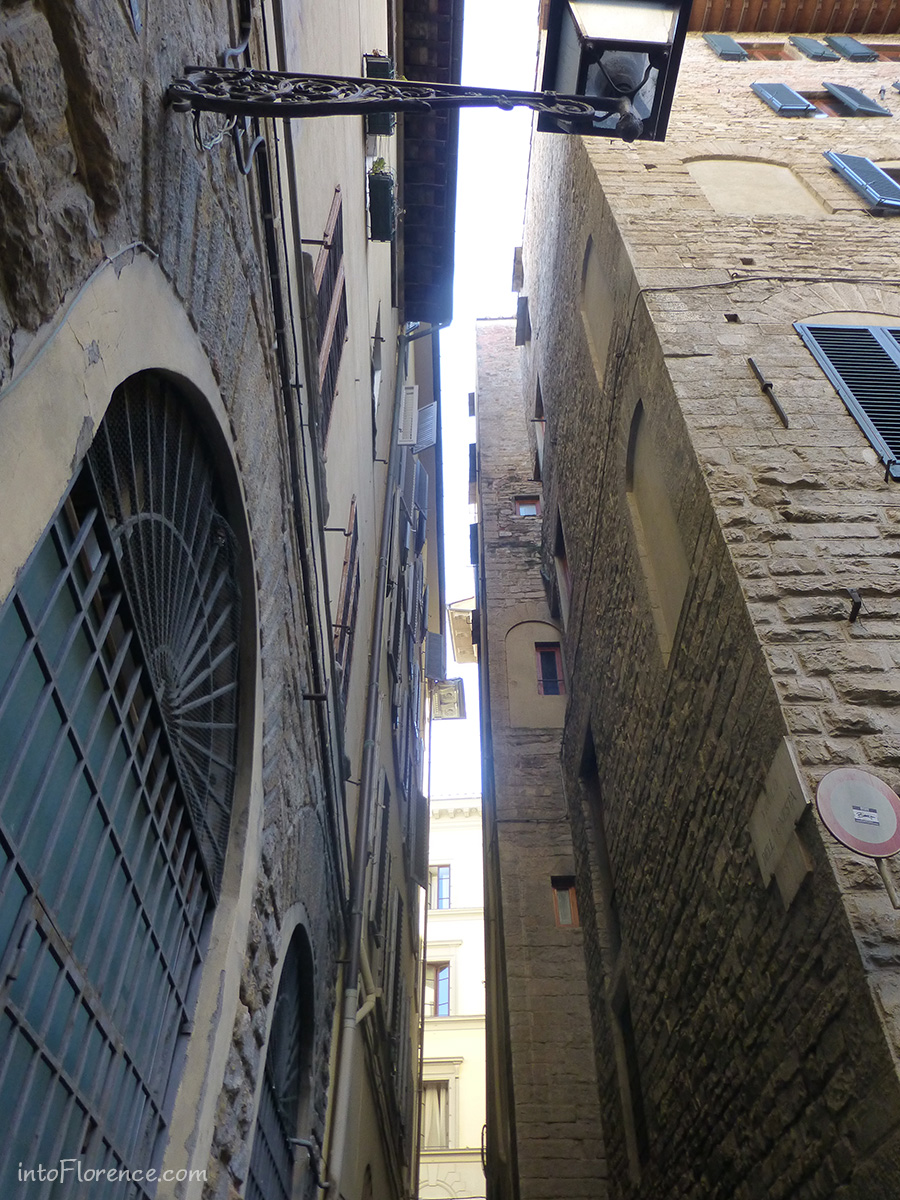
There are still a number of medieval alleys, including Vicolo dell’Onestà between Piazza dei Tre Re and Via dei Calzaiuoli. The alley was named after the Magistrate of Honesty seated there which dealt with the regulation of prostitution, such as prices, locations and the paying of taxes.
Torre degli Adimari
The area around Via dei Calzaioli and the Duomo was the domain of the distinguished family Adimari. Only two towers are left of the various buildings that the family owned: Torre degli Adimari in Via dei Calzaioli.
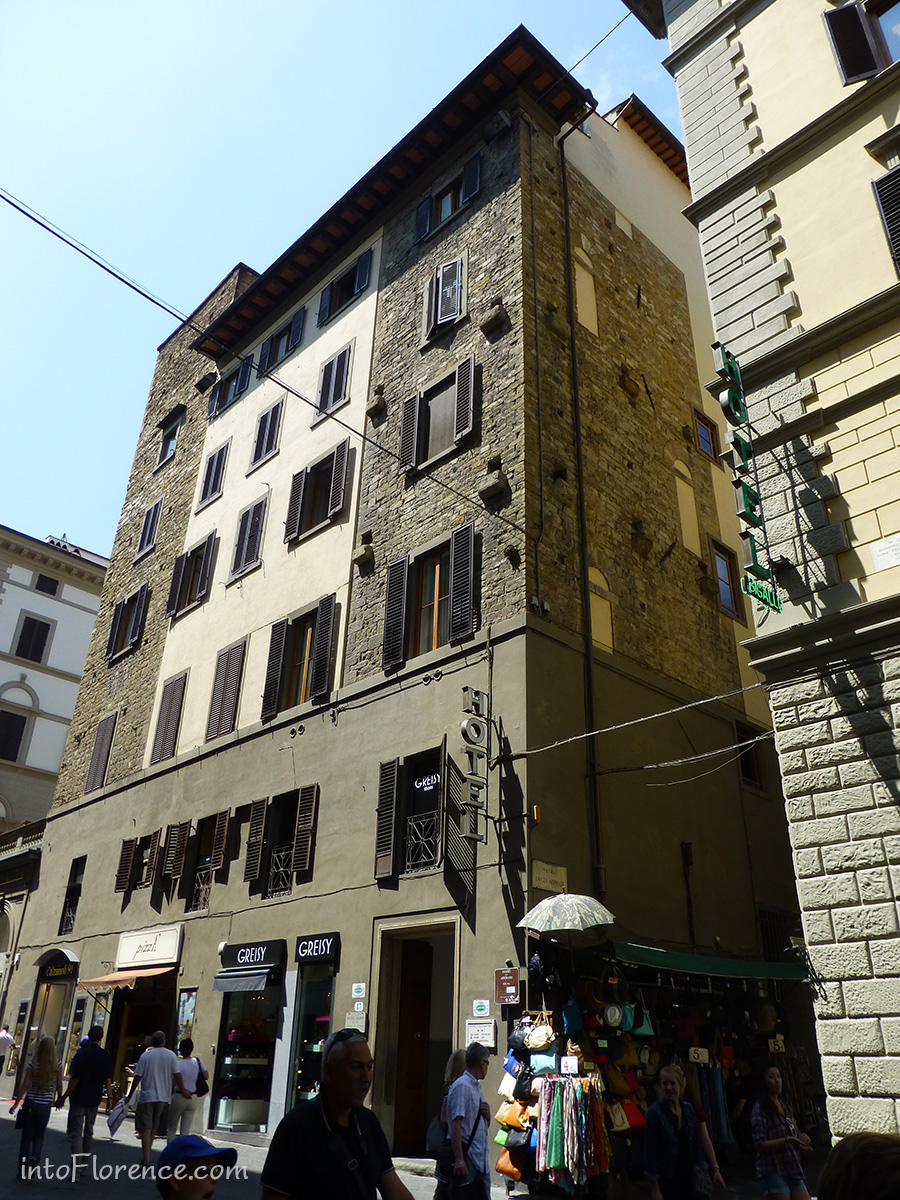
Piazza Santa Elisabetta
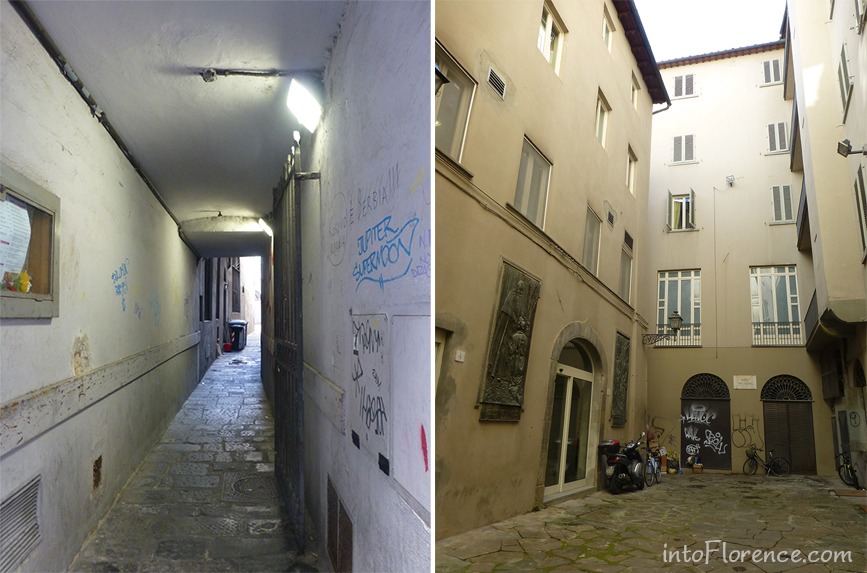
Passing through Vicolo del Giglio we ended up at Piazza del Giglio, here are no historic buildings, but this square and the nearby Via del Campanile is the setting of a ghost story. I will tell all about in a later article.
The next stop was Piazza Santa Elisabetta, where the oldest tower of Florence can be found: Torre della Pagliazza. The foundations of this tower rest on the circular structure of a Roman bath, while the tower itself probably dates from the 6th century. In the 13th century, the tower housed the women’s prison; the name of the tower is derived from the straw mats where the prisoners slept (paglia = straw).
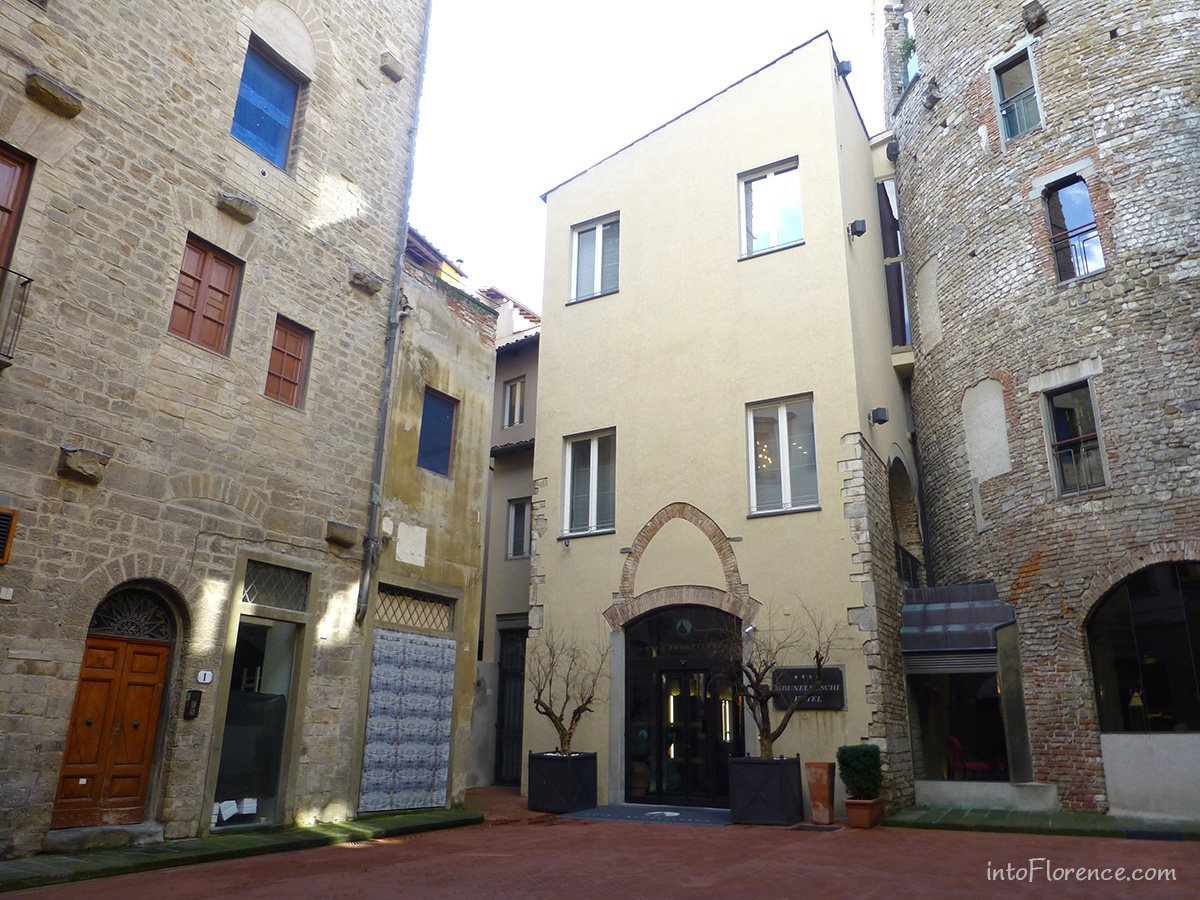
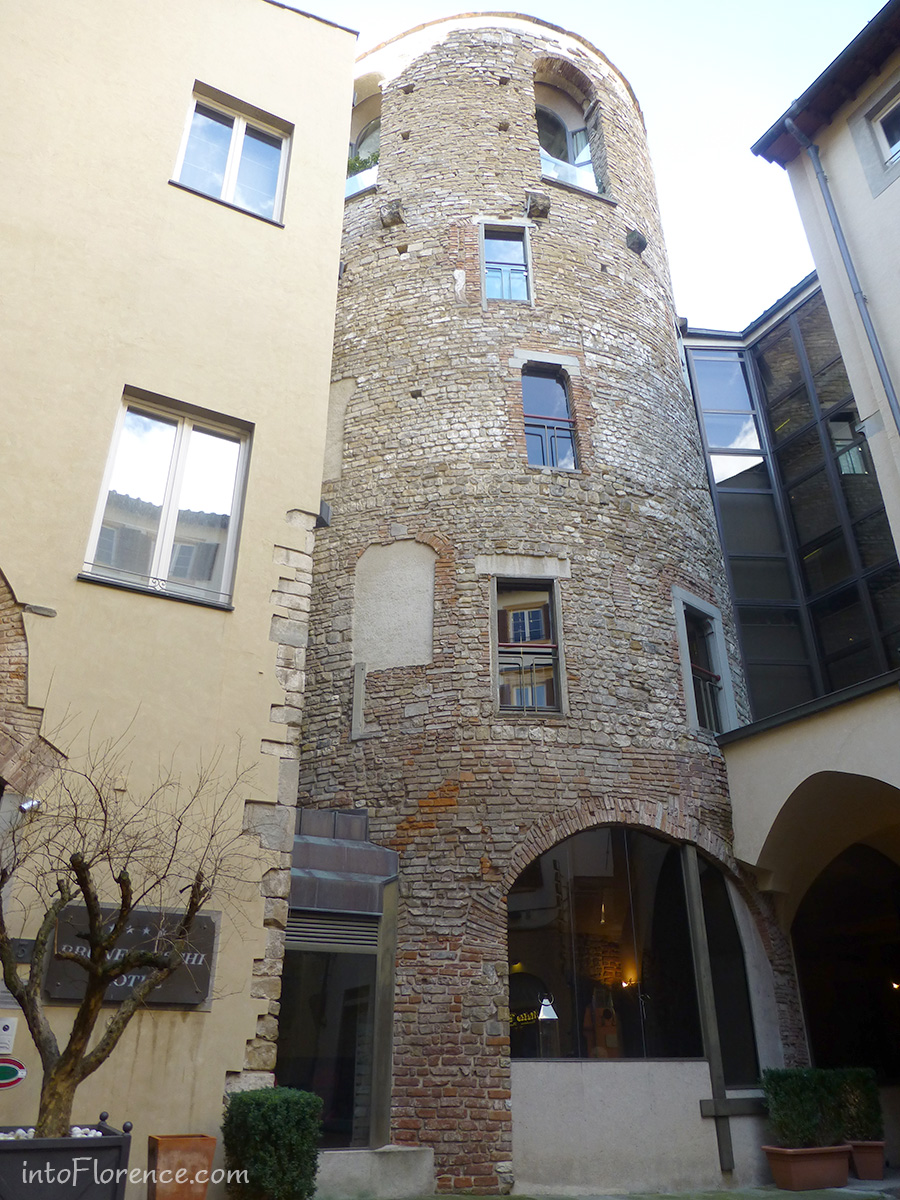
The Torre dei Ricci-Donati can be found on the left site of the square. It’s evident that the entrance was on the first floor; on the ground floor there was room for stables or workshops. The Medieval towers had small narrow windows that in the course of centuries have been replaced by larger windows.
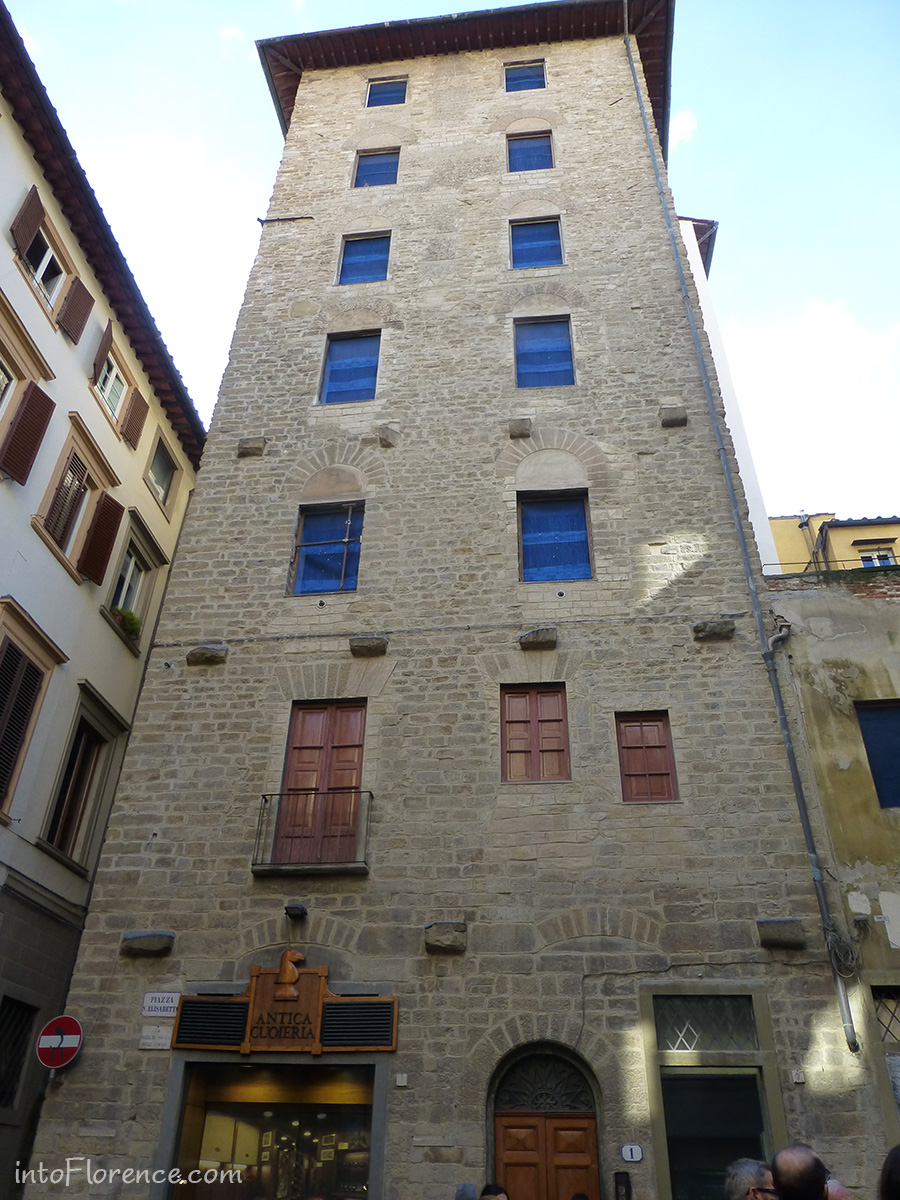
Donati, Cerchi and the Vicolo dello Scandalo
After the civil war between the Guelphs and Ghibellines, won by the Guelphs in the second half of the 13th century, it seemed as if peace had returned to Florence. It didn’t take long however until a huge fight started between the Donati and the Cerchi, both Guelphs. The quarrel led to the separation of White (Cerchi) and Black (Donati) Guelphs. It did not help that both families lived in proximity to each other and the battle turned violent and bloody. The city council decided to separate the two territories by creating an alley between Via del Corso and Via degli Alighieri. The alley was first called Vicolo del Panico (Panic Alley) and was later renamed to Vicolo dello Scandolo (Scandal Alley).
A fence on both sides usually closes off the alley, but when we were there, the gates were open. Although it would have contributed to the medieval experience, we decided not not to go through it and to walk around it instead.
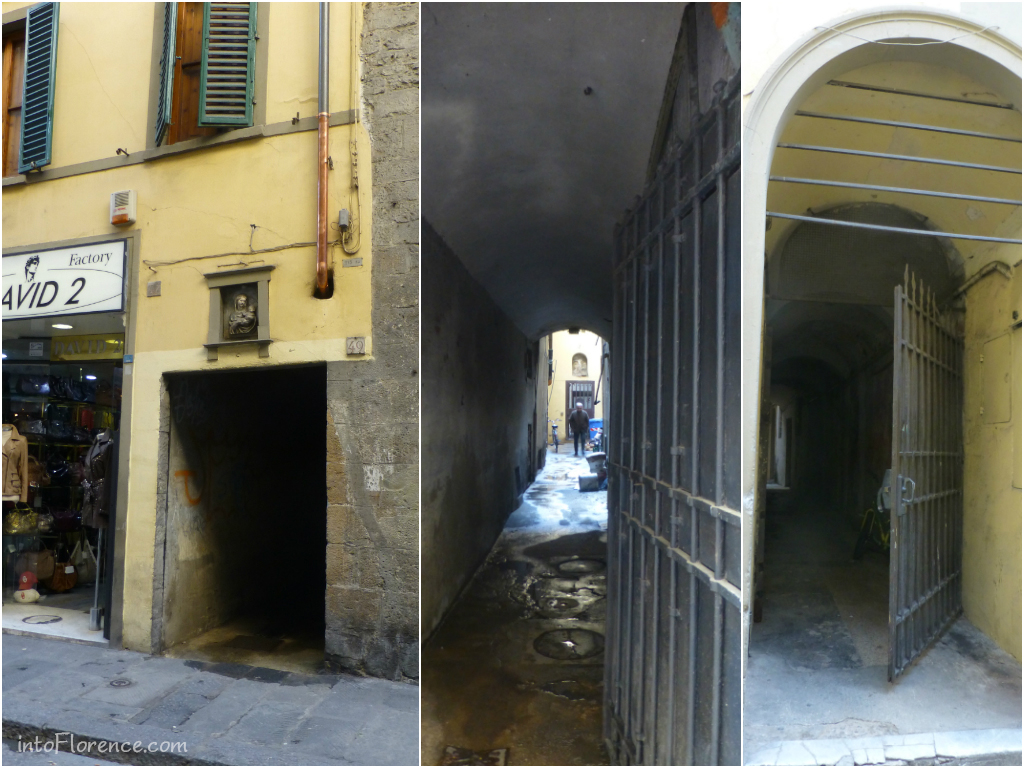
The domain of the Donati family was located around via del Corso where the Torre de’ Donati and their own square Piazza de’ Donati can still be found.
The famous poet Dante Alighieri did not have any sympathy for the rich Florentine families, and he wrote about many of them in his Divine Comedy. His statements about these families can be found on the facades of the buildings that still bear their names.
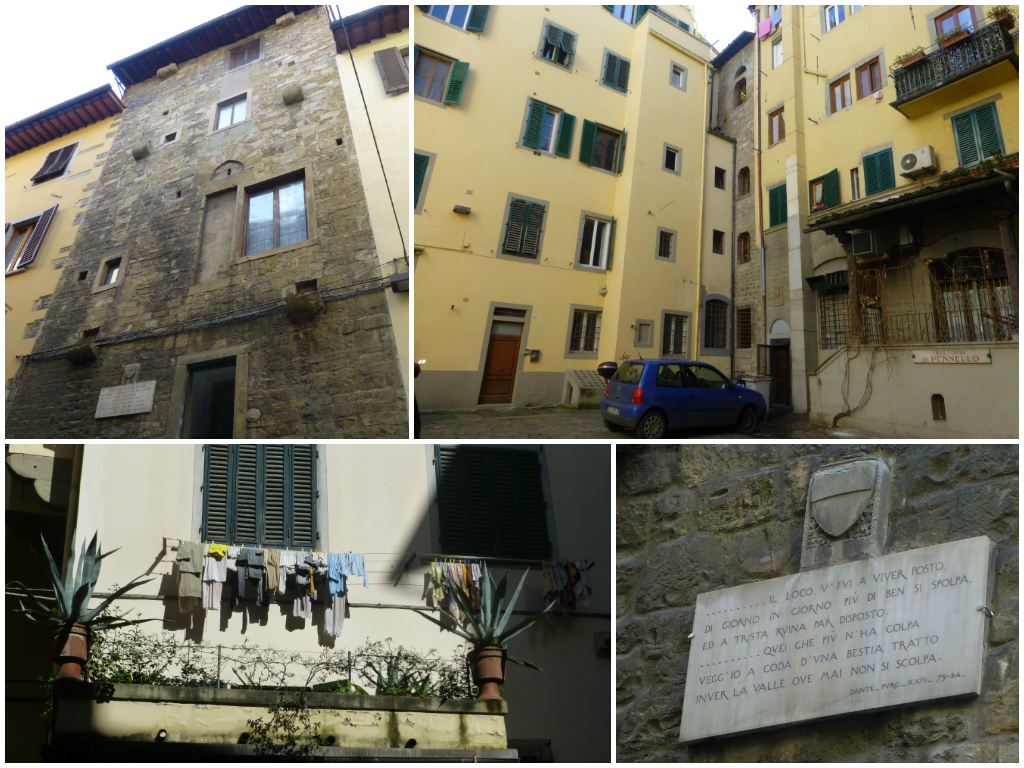
The rivaling family Cerchi lived only a few blocks away. The Torre de’ Cerchi is one of the few towers that have not undergone major changes and still looks pretty authentic with its small, narrow windows. A little further on the corner of Via de’ Cerchi and Via de’ Cimatori you can still find the coat of arms of the Cerchi family recognizable by the three circles (cerchi means circles). It is also the place where their loggia once was.
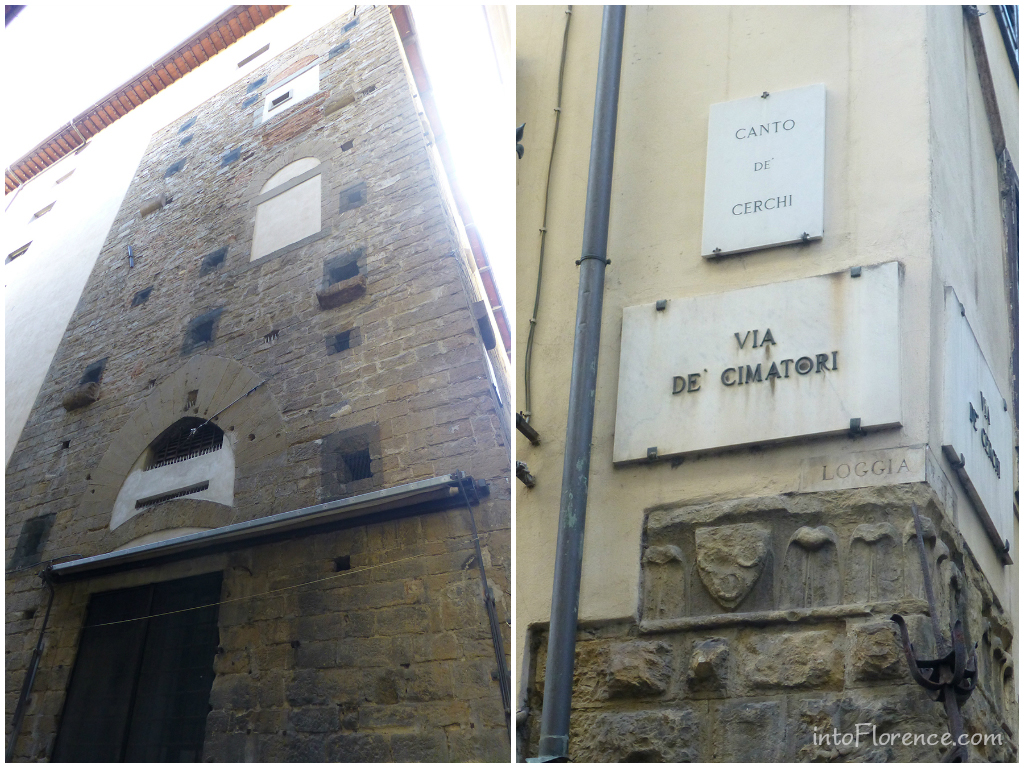
Torre della Castagna
Another well-preserved tower is the Torre della Castagna (Chestnut Tower) at Piazza San Martino. The tower was built in 1038 and in the 13th century, it housed the priors of Florence. Its name comes from the chestnuts that were used for voting.
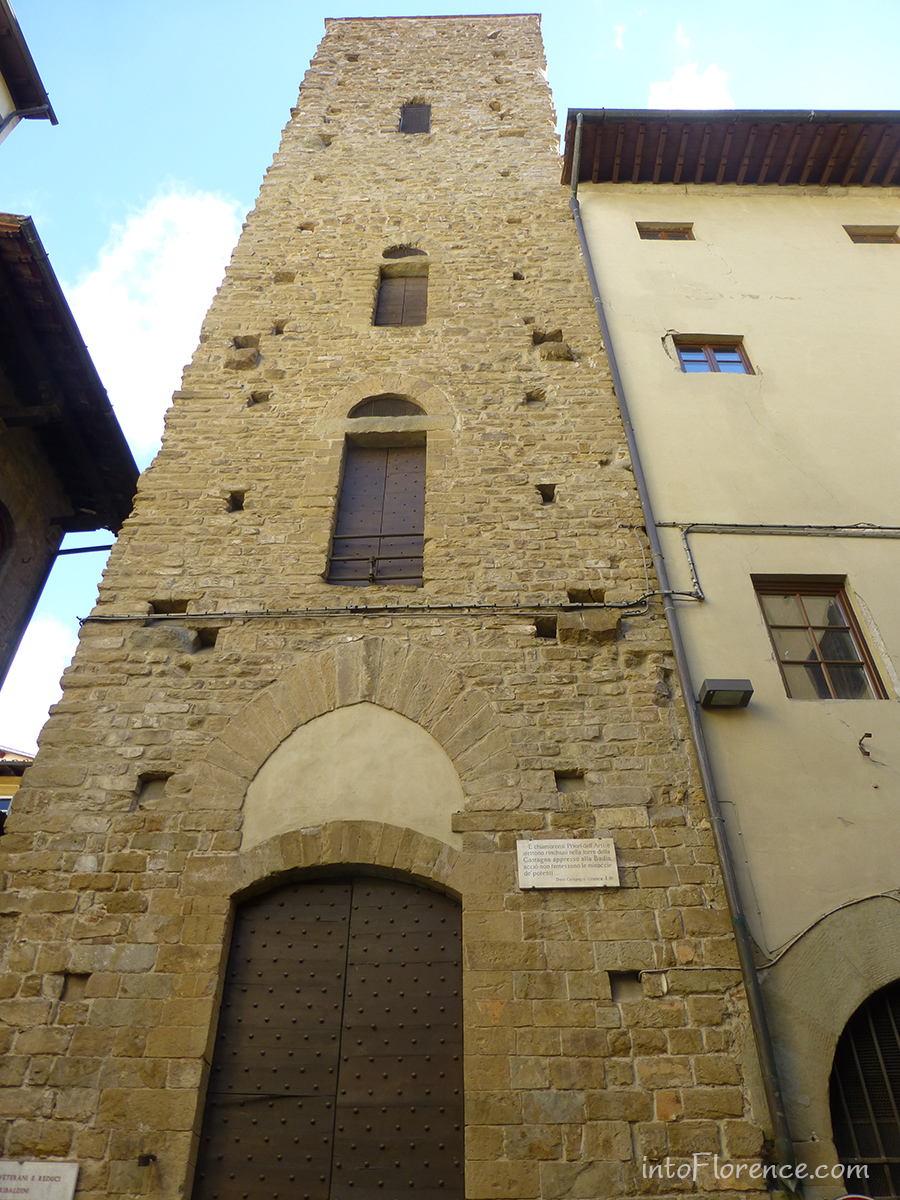
Ponte Vecchio
The tour led us further over Piazza della Signoria and via Calimaruzza, where the wool and fabric traders were located. Their guild weapon can still be found on several buildings.
The Ponte Vecchio is the only bridge that was spared during the withdrawal of the German troops; all other bridges were destroyed. The streets that gave access to the bridge were destroyed in order to make the bridge inaccessible. Therefore, the area around Via Por Santa Maria, which leads to the Ponte Vecchio, consists of almost exclusively post-war buildings.
An exception is the Torre degli Amidei. An important Florentine family whose blood revenge on the young Buondelmonte the ‘Buondelmonti was the spark that ignited the war between Guelphs and Ghibellines. To appease an earlier incident between the two families, a marriage was arranged between Buondelmonti and a girl from the house of Amidei. But the young man broke the wedding agreement after he fell in love with a girl from the Donati family. On Easter morning of the year 1216, he rode his horse across the Ponte Vecchio and passed the Amidei tower on the way to his wedding. There the Amidei family pulled him off his horse and cut his throat.
Torre degli Amidei (left) and a medieval painting of the murder Buondelmonte de’ Buondelmonti.
The Ponte Vecchio was built in 1345 after its predecessor was washed away during the great flood of 1333. A memorial plate on Ponte Vecchio is a silent reminder of this major disaster. Another Medieval remainder is the sundial located directly below the hatch on the wall.
Borgo San Iacopo
We ended the tour in Borgo San Iacopo on the south bank of the river Arno.
Torre dei Belfredelli is one of the tallest surviving towers of Florence characterized by the small garden on its side towards Borgo San Jacopo. The top floor of the tower was added well after the 14th Century.
Torre dei Barbadori is just across the street. This tower was built in 12th Century by the Barbadori a prominent family of merchants.
